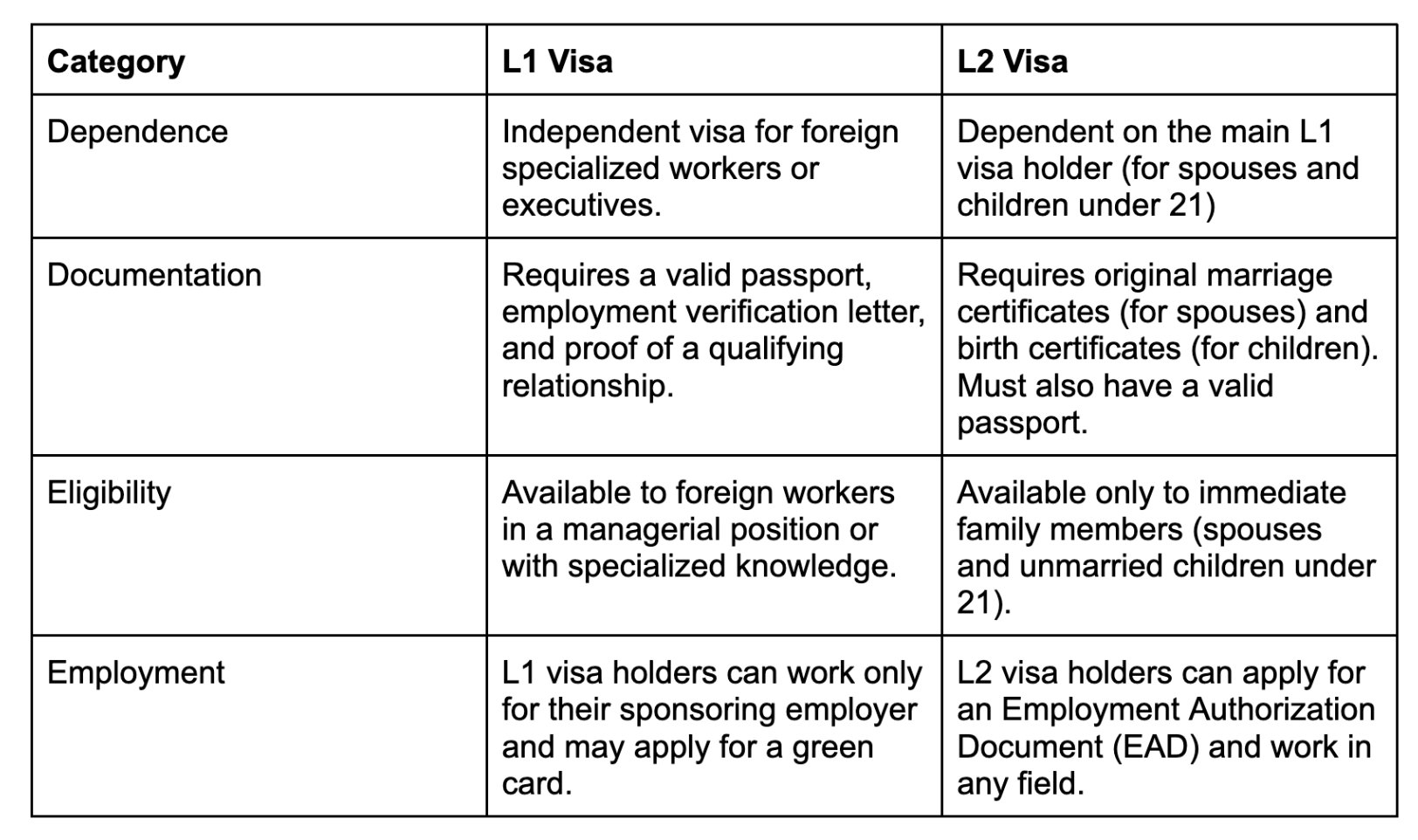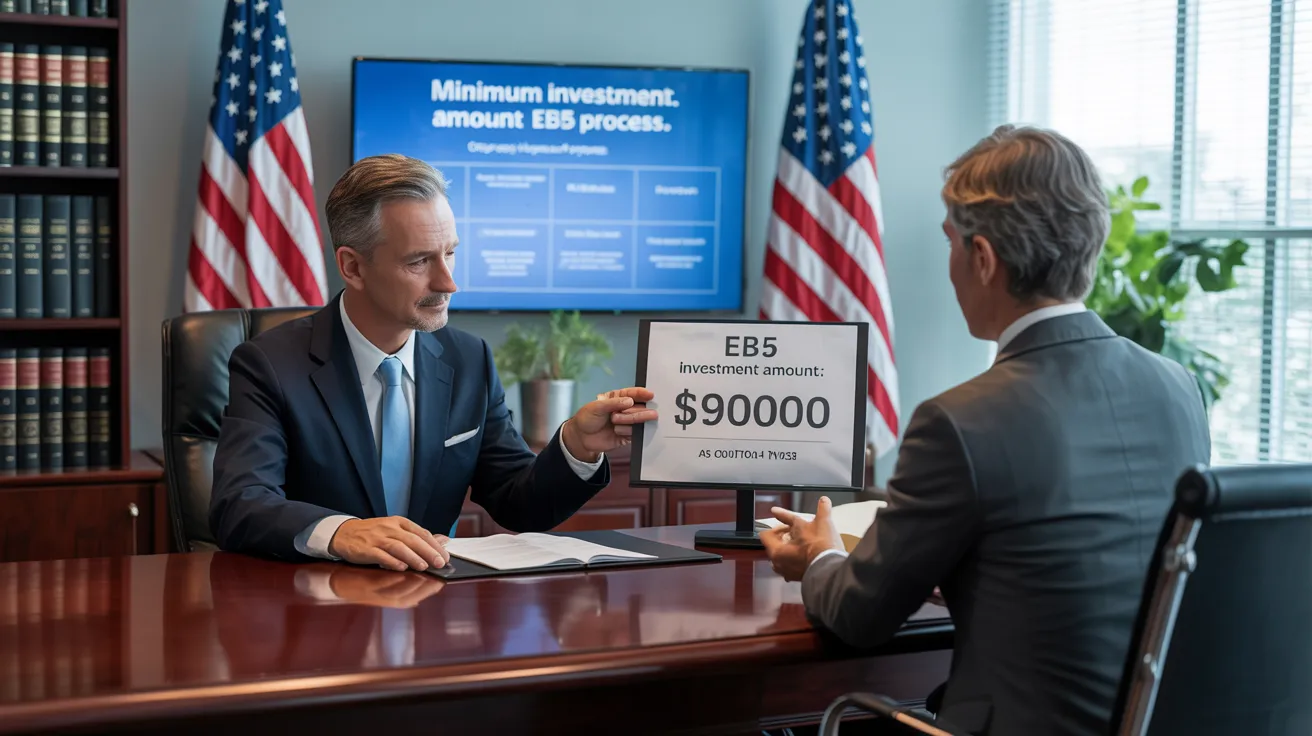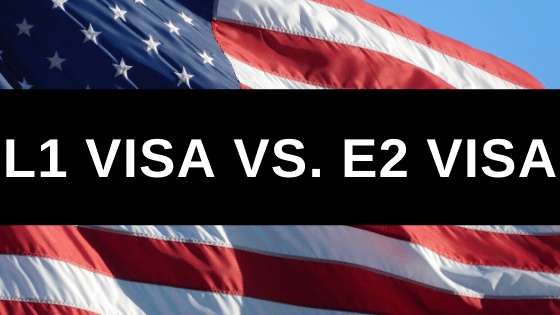Indicators on L1 Visa You Should Know
Table of ContentsL1 Visa - QuestionsL1 Visa Fundamentals ExplainedThe Basic Principles Of L1 Visa L1 Visa for DummiesWhat Does L1 Visa Do?The Single Strategy To Use For L1 Visa
Offered from ProQuest Dissertations & Theses Global; Social Scientific Research Premium Collection. DHS Workplace of the Inspector General. Retrieved 2023-03-26.
United State Department of State. Gotten 22 August 2016. "Workers paid $1.21 an hour to set up Fremont tech company's computer systems". The Mercury News. 2014-10-22. Recovered 2023-02-08. Costa, Daniel (November 11, 2014). "Obscure temporary visas for foreign technology workers dispirit earnings". Capital. Tamen, Joan Fleischer (August 10, 2013). "Visa Owners Replace Employees".
The Main Principles Of L1 Visa
In order to be eligible for the L-1 visa, the foreign firm abroad where the Beneficiary was employed and the U.S. company should have a qualifying connection at the time of the transfer. The different sorts of certifying relationships are: 1. Parent-Subsidiary: The Parent implies a firm, corporation, or various other legal entity which has subsidiaries that it owns and manages."Subsidiary" indicates a company, company, or various other legal entity of which a moms and dad owns, straight or indirectly, greater than 50% of the entity, OR owns much less than 50% but has management control of the entity.
Instance 1: Firm A is incorporated in France and employs the Recipient. Business B is incorporated in the U.S. and wants to request the Recipient. Company An owns 100% of the shares of Company B.Company A is the Parent and Business B is a subsidiary. There is a certifying connection between the two firms and Business B should be able to fund the Beneficiary.
Business A has 40% of Business B. The staying 60% is owned and managed by Business C, which has no relation to Business A.Since Firm A and B do not have a parent-subsidiary connection, Company A can not fund the Beneficiary for L-1.
Instance 3: Business A is incorporated in the united state and intends to seek the Recipient. Company B is incorporated in Indonesia and employs the Beneficiary. Firm An owns 40% of Company B. The remaining 60% is possessed by Business C, which has no relationship to Firm A. Nonetheless, Business A, by formal agreement, controls and complete handles Firm B.Since Business An owns much less than 50% of Business B but takes care of and regulates the business, there is a certifying parent-subsidiary relationship L1 Visa attorney and Business A can fund the Beneficiary for L-1.
An Unbiased View of L1 Visa
Firm B is integrated in the U.S.
Getting The L1 copyright Work

The L-1 visa is an employment-based visa group established by Congress in 1970, allowing multinational firms to move their supervisors, execs, or crucial employees to their U.S. procedures. It is typically described as the intracompany transferee visa. There are 2 main kinds of L-1 visas: L-1A and L-1B. These kinds are appropriate for employees hired in different positions within a company.

Furthermore, the recipient has to have worked in a managerial, exec, or specialized employee placement for one year within the three years coming before the L-1A application in the foreign business. For new workplace applications, foreign work should have remained in a managerial or executive ability if the beneficiary is pertaining to the USA to work as a manager or executive.
The Best Guide To L1 Visa

If given for a united state business operational for more than one year, the first L-1B visa is for approximately 3 years and can be expanded for an additional two years (L1 Visa). Conversely, if the united state company is newly developed or has actually been functional for less than one year, the first L-1B visa is provided for one year, with extensions available in two-year increments
The L-1 visa is an employment-based visa category established by Congress in 1970, allowing international companies to transfer their managers, executives, or essential employees to their U.S. operations. It is frequently referred to as the intracompany transferee visa.
L1 Visa Fundamentals Explained
In addition, the recipient has to have functioned in a managerial, executive, or specialized employee placement for one year within the three years preceding the L-1A application in the international business. For new office applications, international work has to have been in a supervisory or executive capability if the beneficiary is involving the USA to function as a manager or executive.
for as much as 7 years to supervise the procedures of the U.S. affiliate as an executive or supervisor. If issued for an U.S. firm that has been operational for greater than one year, the L-1A visa is initially approved for up to 3 years and can be expanded in two-year increments.
If given L1 Visa process for an U.S. firm operational for greater than one year, the initial L-1B visa is for as much as three years and can be prolonged for an additional two years. Alternatively, if the united state business is newly established or has been functional for less than one year, the preliminary L-1B visa is released for one year, with extensions readily available in two-year increments.